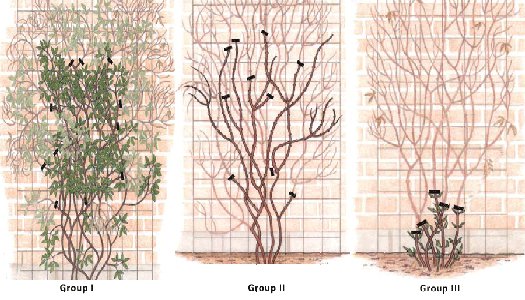Pruning can be a chore that seems daunting but with a little patience you will be rewarded for your diligence and hard work. In the long run, a little pruning can save you a lot of hassle and headache. Here is some guidence on where to begin. If you have any further questions regarding pruning or your plants, please do not hesitate to contact us at 403-704-4145.
Pruning Trees and Shrubs:
When thinking of pruning shrubs and trees, it is important to determine when the plant blooms and on what type of wood the blooms grow on.
- If the trees and shrubs bloom early, prune immediately after the blooms have died.
- If the trees and shrubs bloom on new growth, prune in spring before new growth occurs.
- Most trees and shrubs can be pruned late in the dormant season. This can occur in late winter before spring growth. This helps to begin the wound sealing process and allows for easier pruning as the structure of the plant may be more easily seen.
Pruning shrubs and trees should include: branch stubs, rubbing branches, sucker growth, closely spaced branches, weak/narrow crotches and dead or damaged branches.
When making pruning cuts, prune above a bud that is growing in a desired direction. Ensure that all cuts are at a 45 degree angle.
Apple Trees:
Pruning apple trees makes fall harvest so much easier as well as increasing the yield. This is due to the biennial nature of the tree. This means that apple trees only really produce apples every second year. The inbetween years are marked by very low yields. By pruning some of the buds off, it does not allow excess fruit production, allowing for larger apples and for a larger yield the following year.
The best time to prune an apple tree is late fall or early spring before growth. Prune using sharp and clean pruners. After pruning, wash the pruners thoughly and clean up any cut branches to help stop the spread of disease.
When pruning any apple tree, there are certain things that should be removed:
- Suckers- the shoots that appear around the base of the tree
- Crossing or downwards facing- branches that cross one another or are growing towards the ground
- Rubbing branches- branches causing damage to another or may soon cause damage
- Narrow crotches- branches that grow at a steep angle off the trunk, this is a weak point of the tree
- Broken or dieseased branches
- Competiting leaders- two main branches growing upwards
By removing these, it will open up the interior of the tree and allow for easier fruit harvesting. Apples tree flower and produce fruit on the "old wood", any branches that are older then two years. So when pruning, be careful to only remove up to a third of the new growth from the previous year.
Clematis:
Pruning clematis encourages flowering, strong growth and prevents overgrowth. There are three types of clematis, all with different pruning needs.
To view the clematis' available at Country Gardens and Greenhouse, visit the Plant Directory.
Group 1 or "A": Flowers grow on the old wood from the previous season and appear in spring. Pruning should be to maintain a network of old wood on which flowers can grown. Wait until after flowering to prune these types of clematis. All dead branches may be removed before flowering but pruning to thin or shape should occur after flowering.
Group 2 or "B": Large flowering hybrids that flower in May to June. These should be pruned in late winer or early spring and again after the first round of flowers. In late fall or early spring, all dead, damaged or overgrown stems should be removed. See diagram below.
Group 3 or "C": These clematis flower in late summer so pruning should occur in late fall or early spring. This type of clematis produces new shoots from the base of the plant so the plant should be cut back to 15-30cm above soil level. See diagram below.
